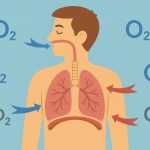Many people think that only gym workouts or running marathons can significantly burn calories, but in reality, our bodies are constantly consuming energy — even during daily activities. From walking and cleaning to cooking and gardening, every movement counts. Understanding which common actions use the most energy helps us stay active, maintain a healthy metabolism, and support overall well-being without necessarily spending hours in a gym.
How the Body Burns Calories
The energy we use throughout the day is measured in calories — units representing the amount of heat needed to fuel the body. The total number of calories burned daily depends on three main factors:
- Basal Metabolic Rate (BMR) — the energy the body uses at rest to keep organs functioning, such as breathing, circulation, and temperature control.
- Physical Activity — all movements beyond rest, including exercise and routine tasks.
- Thermic Effect of Food — the energy required to digest and process what we eat.
Even simple activities can raise energy expenditure above the resting level, especially if done frequently or vigorously.
Top Calorie-Burning Everyday Activities
- Walking
Walking is one of the simplest and most effective calorie-burning actions. A brisk 30-minute walk can burn around 150–250 calories, depending on body weight and speed. Walking uphill or climbing stairs increases the effect dramatically. - House Cleaning
Sweeping, vacuuming, or mopping not only keeps your home tidy but also counts as light cardio. An hour of intense cleaning can use 200–300 calories, similar to a casual bike ride. Washing windows or moving furniture can burn even more. - Gardening
Pulling weeds, digging, or carrying watering cans are surprisingly powerful workouts. Gardening for one hour may burn 250–400 calories, combining strength, endurance, and flexibility. - Cooking
Although not an intense activity, standing, chopping, stirring, and moving around the kitchen adds up. Cooking for an hour burns 100–150 calories — and even more if you’re multitasking or lifting heavy pots. - Playing with Children or Pets
Chasing kids or walking your dog is both fun and effective. Active play can burn 200–400 calories per hour, while bringing emotional satisfaction and bonding time. - Shopping and Carrying Groceries
Walking through stores, pushing a cart, and carrying bags engages multiple muscles. A typical grocery trip of 45 minutes can use 150–250 calories. - Climbing Stairs
This is among the most efficient calorie-burning everyday activities. Just 10 minutes of stair climbing burns 80–120 calories, strengthens the heart, and tones the legs.
Factors That Influence Calorie Burn
The number of calories burned varies by:
- Body weight — heavier people expend more energy for the same activity.
- Intensity — faster or more forceful movements increase calorie use.
- Duration — the longer the activity, the greater the total burn.
- Age and metabolism — younger individuals often burn energy faster.
Turning Routine into Fitness
Small lifestyle choices make a big difference:
- Walk or cycle instead of driving short distances.
- Use stairs instead of elevators.
- Stretch or pace while on the phone.
- Clean the house vigorously once a week.
- Take short breaks to stand and move during sedentary work.
These habits maintain energy balance and promote heart health, flexibility, and mood regulation.
Interesting Facts
- Fidgeting or tapping your foot throughout the day can burn up to 300 extra calories.
- Standing for two hours instead of sitting can use up to 150 more calories.
- Laughing for 10–15 minutes burns about 40 calories — a good reason to smile more often.
- Chewing gum for an hour burns around 10 calories.
- People who take at least 10,000 steps a day generally maintain healthier body weights without strict diets.
Glossary
- Calorie — a unit of energy used to measure how much fuel the body consumes.
- Metabolism — the process by which the body converts food into energy.
- Basal Metabolic Rate (BMR) — the minimum energy required to sustain vital functions.
- Thermic Effect of Food — energy used by the body to digest and process nutrients.
- Physical Activity Level (PAL) — a measure of how active a person is in daily life.


